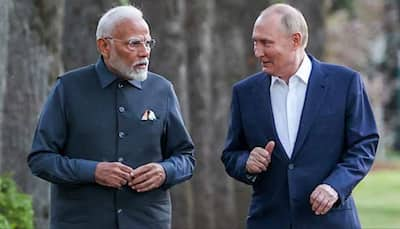On April 22, 2025, the serene Baisaran Valley in Pahalgam, Jammu and Kashmir, was shattered by a brutal Pahalgam terrorist attack that killed 26 people, mostly tourists, and injured over 20. Claimed by The Resistance Front (TRF), a Lashkar-e-Taiba offshoot, the attack has reignited India-Pakistan tensions, pushing the region to the brink. As of April 30, 2025, Pakistan’s Information Minister Attaullah Tarar has issued a chilling warning of a possible Indian military strike within 24–36 hours, prompting UN Secretary-General Antonio Guterres to make urgent calls to India’s External Affairs Minister S Jaishankar and Pakistan’s Prime Minister Shehbaz Sharif. For locals like Aisha, a Pahalgam shopkeeper, and families of victims like Anil, a Delhi father mourning his son, the Pahalgam terrorist attack is a wound that threatens to spiral into broader conflict. This blog provides real-time updates, examines challenges, details India and Pakistan’s actions, and explores what’s next.
Real-Time Updates: A Region on Edge
The Pahalgam terrorist attack has unleashed a cascade of responses. As of April 30, 2025, Indian security forces are intensifying operations in Jammu and Kashmir’s Pir Panjal range, where 4–6 terrorists are believed to be hiding. On April 24, a Lashkar-e-Taiba commander was killed in Bandipora, and a fresh encounter in Kulgam’s Redwani Payeen is ongoing, with two terrorists reportedly trapped. The Jammu and Kashmir Police have released sketches of three suspects—Asif Fauji, Suleman Shah, and Abu Talha—offering ₹20 lakh for leads, while the NIA probes cross-border links, questioning over 250 locals.
Pakistan’s strike alert, issued by Tarar on April 30, claims “credible intelligence” of an imminent Indian military strike, citing the Pahalgam terrorist attack as a pretext. Tarar’s X post warned of “catastrophic consequences,” echoing Pakistan’s Defence Ministry. UN Chief Guterres, alarmed by the escalating rhetoric, spoke separately with Jaishankar and Sharif on April 29, urging de-escalation. Jaishankar welcomed Guterres’ condemnation of the attack, stressing accountability, while Sharif demanded a “neutral investigation” and raised the Kashmir issue, urging UN intervention.
Public sentiment is raw. Vigils continue in Srinagar and Delhi, with protests in Chandni Chowk demanding justice. Tourism, vital to Pahalgam’s economy, has plummeted, with 63% cheaper flights reflecting cancellations. The Pahalgam terrorist attack has left locals like Aisha fearing for their livelihoods. “We live off tourists,” she says. “Now, fear is all we have.”
India’s Response: Resolve and Retaliation
India’s reaction to the Pahalgam terrorist attack has been uncompromising. Prime Minister Narendra Modi, after a April 29 security meeting, granted the military “complete operational freedom” to respond, fueling Pakistan’s fears. India has taken bold diplomatic steps:
- Indus Waters Treaty Suspension: India halted the 1960 treaty, threatening Pakistan’s agriculture, which relies on Indus rivers for 80% of its water.
- Border Closure: The Attari-Wagah border was shut, with Pakistanis given until May 1 to leave India.
- Visa Revocations: All Pakistani visas were canceled, except for Hindu long-term visas, with SAARC exemptions lifted.
- Diplomatic Downgrade: India expelled Pakistan’s military advisers and reduced High Commission staff to 30 by May 1.
- Military Mobilization: The Indian Army deployed drones and helicopters, with General Upendra Dwivedi reviewing operations in Srinagar. Air Force exercises, including Rafale jets, signal readiness.
Jaishankar, in his call with Guterres, reiterated India’s “zero tolerance” for terrorism, vowing to pursue the attack’s “perpetrators, planners, and backers.” India briefed 25 nations, including China, to build global support, with condemnations from the US, Russia, and the UN.
Pakistan’s Response: Defiance and Denial
Pakistan’s response to the Pahalgam terrorist attack blends condemnation with deflection. Sharif condemned terrorism but rejected India’s accusations, calling for a “transparent” probe and framing Kashmir as the “root cause” of instability. His UNGA speech in 2024, invoking Article 370 and Hizbul terrorist Burhan Wani, reflects Pakistan’s narrative. Pakistan’s countermeasures include:
- Military Alert: Pakistan declared a high alert along the Line of Control (LoC), with small arms fire reported in Baramulla and Kupwara on April 25.
- Diplomatic Retaliation: Pakistan closed its airspace to Indian flights, suspended visas, and expelled Indian diplomats, mirroring India’s actions.
- Treaty Rejection: Sharif called India’s treaty suspension an “act of war,” vowing a “full spectrum” response.
- UN Appeal: Sharif urged Guterres to counsel India’s restraint and resolve Kashmir per UNSC resolutions, a stance India dismisses.
Pakistan’s Information Minister Tarar’s strike alert, amplified on X, has sparked panic, with users like @NELiveTV noting Sharif’s “plea” for UN intervention. Pakistan denies TRF’s initial claim, later withdrawn, but India cites intelligence linking the attack to 42 PoK terror launchpads.
Challenges: A Ticking Clock
The Pahalgam terrorist attack presents daunting challenges:
- Escalation Risk: Pakistan’s strike alert and India’s military posture raise fears of conflict, with both nations nuclear-armed. The LoC’s volatility, evidenced by recent firing, complicates restraint.
- Intelligence Gaps: The attack’s scale—using M4 carbines and AK-47s—exposed India’s failure to act on prior warnings, while Pakistan’s denial hinders cooperation.
- Economic Fallout: The Pahalgam terrorist attack has crippled Kashmir’s tourism, with Aisha’s shop empty and hotels reporting 70% cancellations. India’s treaty suspension threatens Pakistan’s agriculture, risking economic destabilization.
- Communal Tensions: The attack’s targeting of Hindu tourists has fueled protests and fears of anti-Muslim sentiment, challenging social cohesion.
- Diplomatic Stalemate: Sharif’s Kashmir rhetoric and India’s dismissal of UN mediation make de-escalation elusive, despite Guterres’ efforts.
For Anil, whose son died in the attack, the Pahalgam terrorist attack is personal. “I want justice, not war,” he says, echoing a nation’s anguish.
What’s Next: A Fragile Future
The Pahalgam terrorist attack sets a tense course:
- Military Operations: India’s ongoing manhunt may yield results, but escalation risks grow if strikes target PoK, as after Pulwama in 2019.
- Diplomatic Efforts: Guterres’ “Good Offices” offer mediation, but India’s focus on accountability and Pakistan’s Kashmir demands clash. Global pressure, including US and UN calls for restraint, may temper actions.
- Tourism Recovery: India must secure Pahalgam with drones and CRPF patrols to restore confidence, balancing safety with hospitality.
- Economic Stabilization: Pakistan faces water and trade crises from India’s treaty suspension, while Kashmir needs aid to revive tourism.
- Long-Term Strategy: Dismantling PoK terror networks and countering TRF’s propaganda are critical to prevent future attacks.
A Human Cry for Peace
For Aisha, the Pahalgam terrorist attack threatens her family’s survival. “We welcomed tourists like brothers,” she says. For Anil, it’s the loss of a son and a plea for justice. The UN chief’s calls to Jaishankar and Sharif reflect a world watching anxiously as two nations teeter on the edge. The Pahalgam terrorist attack is a test—of India’s resolve, Pakistan’s accountability, and humanity’s hope for peace. As vigils light up Srinagar, the cry is clear: no more bloodshed.
Moved by the Pahalgam terrorist attack or inspired by calls for peace? Share your thoughts or support for the victims in the comments. Want to help? Donate to Kashmir relief funds, advocate for de-escalation, or follow our blog for updates on this crisis. Let’s stand for justice and peace!









